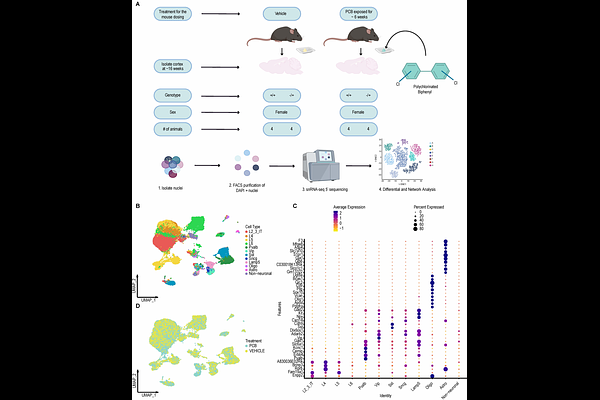Female cortical cellular mosaicism underlies shared MeCP2 and PCB impacted gene pathways

Female cortical cellular mosaicism underlies shared MeCP2 and PCB impacted gene pathways
Sharifi, O.; Neier, K. E.; Valenzuela, A. E.; Torres, C. G.; Korf, I.; Lein, P. J.; Yasui, D. H.; LaSalle, J.
AbstractEtiologies of neurodevelopmental disorders involve genes and environment however their interactions are understudied. Rett Syndrome (RTT) is an X-linked, dominant neurodevelopmental disorder caused by mutations in MECP2, encoding the epigenetic regulator methyl CpG binding protein. Epigenetic features of MECP2 expression due to X-linked cellular mosaicism and the variability in severity and timing of progression in RTT suggest interaction with environmental neurotoxicants such as lipophilic polychlorinated biphenyls (PCBs). To understand shared mechanisms, we exposed WT and Mecp2e1-/+ female mice to a human-relevant PCB mixture and dose, then performed single-nucleus 5 prime RNA-seq from cortex. We identified significant overlap in dysregulated genes and 71 shared pathways between the effects of PCB exposure and MeCP2 mutation, and co-mitigation of their transcriptional impacts. PCBs influenced the non-cell-autonomous transcriptional effects of MeCP2 mutations in wild-type-expressing neurons within the mosaic mutant female cortex in both mouse and human, suggesting that the interactions predominantly involve homeostatic gene networks.